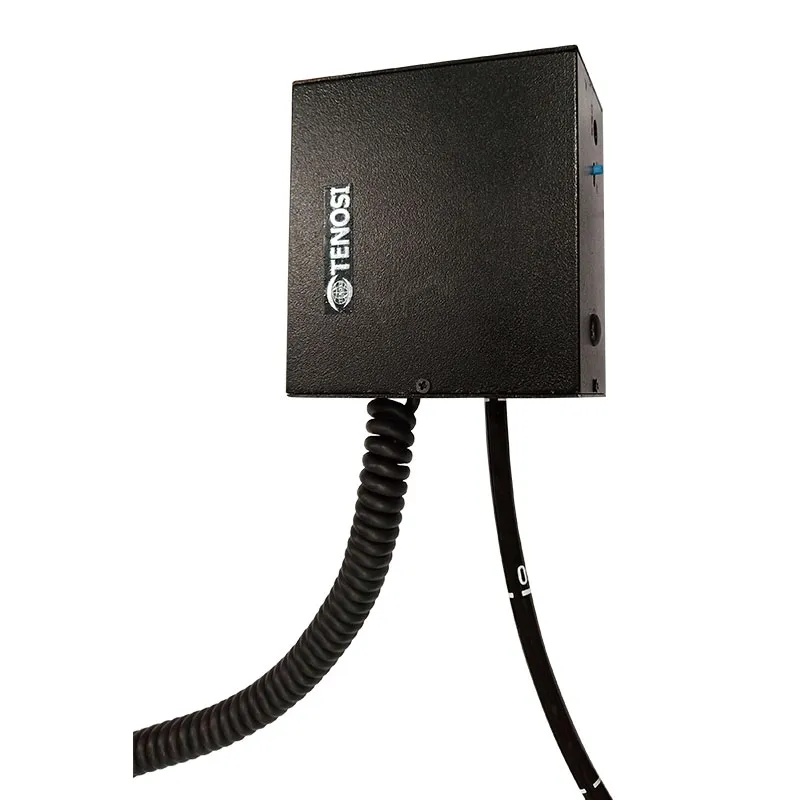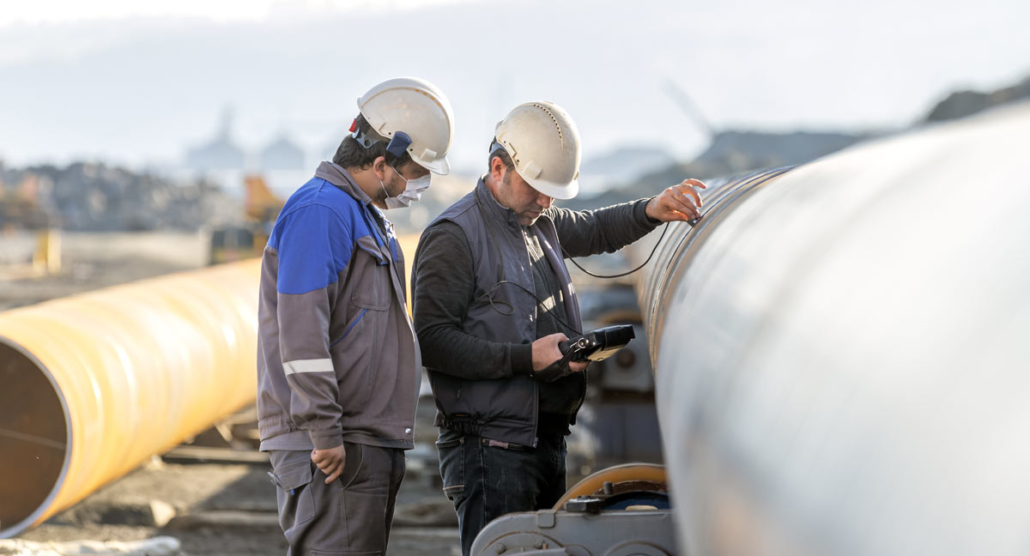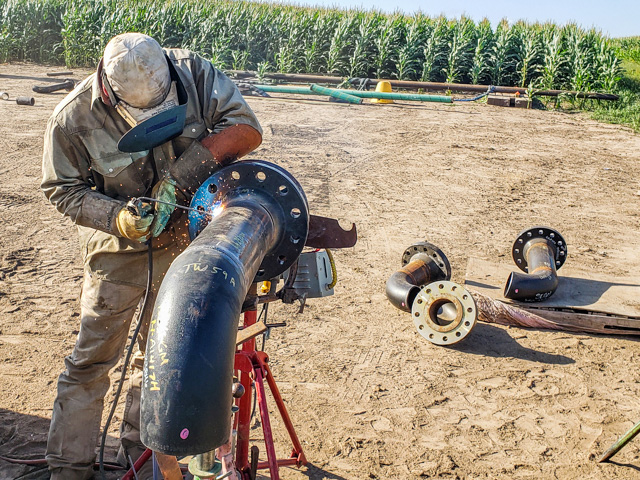Comprehensive Pipeline Welding Inspection: Protecting Facilities Integrity
Wiki Article
Comprehensive Overview to Pipe Welding Assessment: Making Sure Stability and Safety And Security in Pipe Building and Maintenance
The integrity and security of pipes are vital in today's facilities landscape, emphasizing the essential duty of welding inspection in pipeline building and construction and maintenance. Pipeline Welding Inspection. The complexities included in welding evaluation raising important inquiries concerning industry criteria and the advancing technologies that may redefine these practices.
Significance of Welding Evaluation
Welding assessment plays a critical role in guaranteeing the honesty and safety and security of pipe systems. It works as an essential procedure that verifies the high quality and integrity of bonded joints, which are often the most weak spots in pipeline construction. Through methodical evaluation, assessors can recognize prospective issues such as cracks, porosity, and insufficient combination, which may compromise the structural integrity of the pipeline.The significance of welding assessment expands past plain conformity with industry requirements; it likewise safeguards public health and wellness and the setting. Comprehensive examinations can enhance the durability of pipeline systems, decreasing the demand for costly repair services and downtime.
Along with making certain safety and security and conformity, welding evaluation promotes a culture of high quality guarantee within companies. By prioritizing examination throughout the welding procedure, firms can develop a credibility for integrity and excellence, inevitably bring about enhanced consumer confidence and company opportunities (Pipeline Welding Inspection). Hence, the importance of welding assessment can not be overemphasized in the context of pipeline building and construction and maintenance
Trick Welding Processes
Different welding processes are utilized in pipeline building and construction, each with its own advantages and applications. Amongst the most commonly made use of approaches are Protected Steel Arc Welding (SMAW), Gas Tungsten Arc Welding (GTAW), and Gas Metal Arc Welding (GMAW) SMAW is favored for its convenience and capacity to do well in different ecological conditions, making it ideal for area applications.GTAW, often described as Tungsten Inert Gas (TIG) welding, is acknowledged for its ability to generate top quality welds with excellent control over warmth input, making it excellent for thin-walled pipelines and stainless-steel products. GMAW, or Steel Inert Gas (MIG) welding, supplies high deposition rates and is efficient for large tasks, often employed in the fabrication of pipelines in regulated environments.
Furthermore, Immersed Arc Welding (SAW) is utilized for its deep penetration and high efficiency, specifically in the building and construction of large-diameter pipelines. Each of these procedures adds to the overall honesty and safety and security of pipeline constructions, enabling welders to pick the most ideal approach based upon material type, project demands, and environmental problems. Recognizing these essential welding procedures is vital for efficient pipe welding inspection.
Usual Issues and Their Influence

Porosity, defined by little gas pockets caught within the weld, deteriorates the product and can lead to leaks. Splits, which may happen as a result of thermal stresses or inappropriate cooling, can circulate and result in architectural Click This Link failing under pressure. Undercutting, where the base steel is eroded along the weld grain, reduces the reliable cross-section of the pipe, raising the risk of crack.
Incomplete combination takes place when the weld metal does not effectively bond with the base metal, leading to weak areas that might fail under stress and anxiety. Slag addition, the entrapment of non-metallic material within the weld, can likewise weaken the joint's stability. Recognizing and attending to these problems early in the building and construction procedure is important to making sure the long-term reliability and safety of pipeline systems, thus protecting both the facilities and the setting.
Examination Tools and methods

Visual evaluation is the first line of defense, permitting assessors to identify surface abnormalities, misalignment, or various other noticeable problems. Ultrasonic screening uses high-frequency audio waves to discover interior problems, giving precise depth measurements and defining issues without damaging the weld. Radiographic screening utilizes X-rays or gamma rays to create images of the weld, making it possible for the identification of internal gaps, fractures, or additions.
Magnetic bit browse around this web-site screening is particularly effective for spotting surface and near-surface discontinuities in ferromagnetic products. This technique entails applying a magnetic field and great iron fragments to the weld, revealing flaws via the build-up of bits at flaw websites.
In enhancement to these techniques, specialized devices such as automated ultrasonic screening devices and electronic radiography systems boost examination precision and efficiency, making certain a comprehensive analysis of pipe welds during building and construction and maintenance.
Ideal Practices for Conformity
Abiding by ideal practices for compliance in pipeline welding assessment is essential for making certain the honesty and security of the framework. Organizations needs to develop a detailed top quality management system that straightens with sector requirements such as ASME, API, and AWS. This includes creating in-depth welding treatments that specify the certifications, techniques, and materials needed for welders.Regular training and certification of inspection employees are vital to preserve high expertise degrees. Inspectors must know with numerous non-destructive testing (NDT) methods, consisting of ultrasonic screening, radiographic screening, and visual examination, to properly recognize prospective defects.
Documents plays a vital duty in compliance; keeping precise records of examinations, weld procedures, and workers credentials aids to make sure traceability and accountability. Scheduled audits and reviews of welding methods should be performed to determine locations for improvement and ensure adherence to developed methods.

Conclusion
In verdict, the application of rigorous welding assessment methods is paramount for making sure the stability and safety and security of pipe building and maintenance. By identifying defects and employing advanced inspection strategies, companies can significantly boost the high quality of welded joints. Adhering to best practices promotes compliance with sector criteria, eventually protecting public health and wellness and stopping environmental risks. Continual improvement in learn this here now examination procedures will add to the long life and dependability of pipeline systems, highlighting the critical function of welding assessment in the sector.The stability and security of pipelines are extremely important in today's infrastructure landscape, underscoring the important role of welding assessment in pipeline construction and maintenance. Comprehending these crucial welding processes is crucial for effective pipeline welding assessment.
Adhering to ideal techniques for compliance in pipeline welding evaluation is crucial for guaranteeing the stability and safety of the infrastructure.In conclusion, the execution of strenuous welding assessment procedures is critical for making certain the integrity and security of pipeline building and construction and maintenance. Continuous improvement in evaluation procedures will add to the longevity and reliability of pipe systems, underscoring the critical duty of welding evaluation in the industry.
Report this wiki page